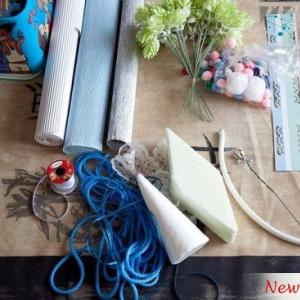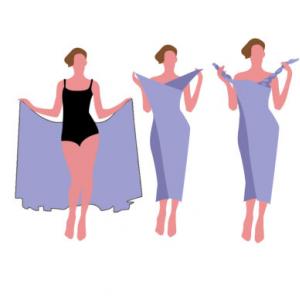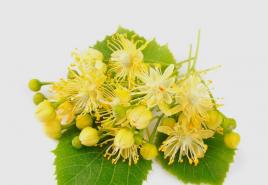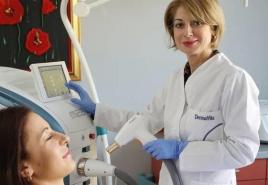Аудиокнига Анне-Катарине Вестли. Папа, мама, бабушка, восемь детей и грузовик слушать онлайн, скачать. Анне-Катрине Вестли: Папа, мама, бабушка, восемь детей и грузовик (сборник) В город приезжает бабушка
Анне-Катрина Вестли - одна из самых знаменитых детских писателей Норвегии, часто ее славу сравнивают со славой Астрид Линдгрен. За пятьдесят лет творческой работы она написала 56 книг, которые переведены на 16 языков. Свои истории писательница рассказывала сама в цикле детских радиопередач, а потом они выходили в свет в книжном формате. Несколько поколений норвежских детей выросли на ее книгах. Наибольшей популярностью пользуются истории из жизни простой норвежской семьи, в которой папа работает шофером, а мама - домохозяйка. Их набралось аж на девять книг. Разумеется, семья эта совсем не обыкновенная. И не только потому, что в ней восемь детей, но еще и потому что их повседневная жизнь предстает перед маленькими читателями как захватывающее приключение.
Повесть «Папа, мама, бабушка, восемь детей и грузовик» впервые вышла в 1957 году и с тех пор много раз переиздавались. В нашей стране - уже трижды за последние пять лет.
Действие разворачивается в столице Норвегии Осло, в эпоху, которую довольно трудно вообразить современному городскому ребенку - в том времени не было еще ни телевизоров, ни компьютеров, ни даже стиральных машин. Герои повести живут по-настоящему трудной жизнью. Попробуйте-ка уместиться вдесятером в однокомнатной квартире в центре Осло, да еще и с собакой. Попробуйте каждый день по два раза топить печку, чтобы не было холодно, мыться на кухне в корыте, всегда донашивать одежду за старшими и спать на матрасе на полу. Попробуйте как следует сделать уроки, когда Мортен хочет стучать молотком, Марен - танцевать, Мона - петь, Мина - кричать, а Милли - барабанить. Из нашего времени, наполненного всяческими удобствами и приспособлениями, все это кажется совершенно немыслимым. Невозможно в таких условиях быть счастливым. Но мы сразу, с первых страниц книги, ощущаем, как счастлива эта семейка. Никто не жалуется на трудности, а все вместе ищут выход. И выход рано или поздно находится. Вот, например, из деревни приезжает погостить бабушка. И где, спрашивается, она разместится, если уже и так столько народу живет в этой маленькой квартирке? Но папа, мама и восемь детей так сильно любят бабушку, что для них это никакая не проблема. Да и для бабушки тоже. Подумаешь, можно и на столе поспать, это даже интересно. Главное - они снова вместе.
Однажды под Рождество Мона ужасно рассердилась на Мортена, который испортил ее подарок для мамы - вышитую салфетку. Она готова была тут же разорвать Мортена на кусочки, но папа предложил ей совершенно неожиданный выход - пробежаться несколько кругов вокруг квартала.
«Папа взглянул на Мону.
Конечно, это очень плохо, - сказал он. - Но самое плохое, что у нас так мало места. Здесь даже посердиться негде по-настоящему.
- Как это - негде? - удивилась Мона. - Разве мне сердитой надо больше места, чем не сердитой?
- Несомненно, - ответил папа. - Вот, например, я, когда сержусь, убегаю из дому и обегаю несколько раз вокруг нашего квартала. Чем злее бываю, тем больше бегаю…
- И я попробую! - воскликнула Мона. - Знаешь, как я сердита! Ох, как я сердита!»
Мона с восторгом включается в папину игру. Она мчится круг за кругом и неожиданно обретает новое знание: оказывается, справиться со своим гневом вполне возможно. Это даже очень веселое занятие. И, конечно, она прощает Мортена. А мама получает к Рождеству новую вышитую салфетку.
Любовь рождается в ответ на любовь. Такое тесное, теплое человеческое соединение, такое бережное отношение друг к другу, крепкая дружба и любовь в семье - об этом, конечно, мечтает каждый ребенок. Но готов ли он сам любить в ответ? Часто, к сожалению, нет. Просто потому, что не умеет, не чувствует другого человека. Не знает, как это делается. И никто не может ему в этом помочь. Современный человек все больше стремится уединиться, побыть в одиночестве, отгородиться от других людей и их проблем. И дети - не исключение. А в этой книжке все ровно наоборот.
Старый красный грузовик тоже полноправный член семьи, разделяющий ее радости и труды. Его также берегут, ухаживают за ним, разыскивают, когда его угоняют, стараются не нагружать слишком сильно, чтобы не перекосило кузов. Трепетное, любовное отношение к человеку и к вещи не как одноразовый подвиг, а как совершенно обычное явление повседневной жизни - это одно из потрясающих открытий, которые ждут каждого, кто возьмется читать эту повесть, особенно современного ребенка, живущего в пространстве общества потребления. Отдавать, а не брать, заботиться о ком-то, волноваться за другого, оказывается, бывает гораздо интереснее, чем без конца что-то требовать для себя. И еще, оказывается, по-настоящему человек нуждается вовсе не в вещах, а в людях.

Дети-читатели с первых страниц с удивлением замечают, что восемь детей из книжки всегда веселы и изобретательны в играх, несмотря на внешнюю скудость их жизни. А вот их школьный приятель Сигурд, у которого - о чудо! - есть своя собственная комната и много всяких интересных вещей, не знает, чем себя занять, и с удовольствием веселится с ними вместе на детском празднике, который устроили для них папа и мама. В той самой одной-единственной на всех комнате, превращенной на пару часов в корабль - со сходнями из гладильной доски и парусом, сшитым на скорую руку из восьми детских простыней. Вот в чем все дело, вот один из секретов счастья этой семьи - взрослые и дети стремятся друг к другу, им хорошо вместе. Взрослые умеют и любят играть со своими детьми, а дети не отделены от повседневных забот своих родителей. Маленькие читатели очень быстро замечают душевную щедрость взрослых героев книжки, которые запросто делятся своим временем и силами, не отговариваясь усталостью или недосугом, хотя работают целый день не покладая рук. Как это, к сожалению, не похоже на повседневную реальность жизни современного ребенка, часто предоставленного самому себе или переданного любящими, но очень занятыми родителями под опеку няни. Он и вздыхает с завистью - вот бы и мне так…

Узнав, что детям не о чем будет рассказывать в школе после летних каникул, которые они опять провели в душном городе, папа принимает мгновенное решение: завтра едем на море. Не беда, что нет денег на билеты и гостиницу. Вам же нужно море? Вы его получите. Для этого понадобятся всего-навсего грузовик, рюкзак, одеяло для каждого и теплый свитер в придачу. Ну и конечно, купальные принадлежности. Простота быта этой семьи и крепкая любовь воистину творят чудеса. За неделю на море дети веселятся так, как их одноклассники, может быть, не отдохнули за все лето. И это тоже обязательно станет еще одним открытием для ребенка, особенно лет девяти-десяти, для которого уже становится важно, во что одет он сам и его друзья, какие вещи у него есть, а каких нет. Эта глава из повести стоит всех специальных воспитательных разговоров. Просто прочтите ее вслух и обрадуйтесь вместе с ребенком, когда он сам нечаянно догадается, что человек вовсе не измеряется вещами, которые на нем надеты.
А вообще говоря, книжка «Папа, мама, бабушка, восемь детей и грузовик» совсем не философская, а очень-очень веселая, наполненная играми и выдумками. Например, имена всех детей в этой семье похожи на забавную считалку-скороговорку, они все начинаются на букву М. Кажется, будто мама затеяла очередную игру, когда она громко зовет детей к столу: « Марен, Мартин, Марта, Мадс, Мона, Милли,Мина, Мортен - обедать!» И что с того, что на обед у них часто только хлеб и картошка. Вся трудность жизни героев словно спрятана до поры от читателя за проделками Мортена и его братьев и сестер. А самые маленькие читатели, те, которые пока еще только слушают, вообще не замечают этих трудностей, не в силах оторваться от увлекательного текста. Они немножко завидуют Мортену, который выкрасил весь пол в комнате красной краской, и ничего ему за это не было. Волнуются - разрешит ли папа оставить найденную в лесу таксу, которой дети уже придумали смешное имя Самоварная Труба? Затаив дыхание, следят, как маленький Мортен помогает тушить пожар в доме по соседству, как бабушка защищает дом от разбойников, устраивая ловушку с ведром, - и с облегчением вздыхают, когда разбойники оказываются вовсе не разбойниками, а добрыми друзьями семьи, приехавшими в гости без предупреждения.

Повесть пользуется неизменным успехом у детей разного возраста, начиная лет с четырех.
Прекрасные иллюстрации Натальи Кучеренко наделяют каждого ребенка и взрослого в этой семье своими характерными чертами. Вязаную шапочку Моны и пестрые штаны Мортена, украшенные красными заплатками, невозможно спутать ни с чем. А может быть, книжка так интересна еще и потому, что каждый ребенок обязательно найдет здесь свое «отражение» - кто-то обнаружит свое сходство с маленьким неугомонным Мортеном, еще не выговаривающим букву «р», кто-то узнает себя в Мадсе, который боится идти в новую школу. А чьим-то отражением, возможно, окажутся обидчивая Мона или задумчивая Марен.
Если вдруг вашим детям покажется, что книжка кончилась слишком быстро, предложите им прочитать ее продолжение под названием «Маленький подарок Антона» (эта книга тоже выпущена издательством «Махаон)». И не удивляйтесь, если вас спросят: а нет ли еще?
Елена Литвяк
HEALING THE HEART, HEALING THE MIND
Posted on February 14, 2020 yogarasayana vosem_deteiy_i_gruzovik.html|먹튀검증|안전놀이터|배트맨토토|먹튀검증소 vosem_deteiy_i_gruzovik.html|먹튀검증|안전놀이터|배트맨토토|먹튀검증소
Healing the Heart
is
Healing the Mind

The heart is alive. In fact, it brings life to us with each pulsation, sending rivers of prāna flowing through our plasma, blood, muscle, fat, skeleton, marrow and finally, our vital reproductive juices. There it transforms into our very essence itself or leaves us to form a new life with another beautiful heartbeat singing its song!
This heart that is the fiery sun of our own universe, is ever producing our minds through its sensory rays and clear light! Mind as it spreads its venous tentacles to every sense organ so that we can fully experience the world around us. Mind that extends instinctively down into our bellies, so we vicariously feel each perceptive truth as a somatic experience. And mind, like a tree, sends its rising branches upwards to form our brain. Where we think, imagine, reason and occasionally perceive the highest truths.
And yet, we imprison this heart behind gates of arrogance, lust, hatred, greed, jealousy and pride. And we subject it cruelly to fears, unjustly to angers and unmercifully to grieving.
Our hearts are the key to our lives
. Heal our heart and we heal our mind.
In healing the mind we finally discard the undigested toxins of fear, anger and grief. And spontaneously and oh so creatively, the heart sings its joy and its simple innocent declaration- know me and know peace.
Upcoming Healing the Heart Workshops
February 22-23:
Yoga Bungalow, San Juan Capistrano, CA
visit website »

April 17-19:
Sivananda Ashram Yoga Farm, Grass Valley, No. CA
visit website »


May 8-10:
Salt Lake City UT: Save the date! Hosted by Maria Radloff. Details and registration coming soon.
SLC friends, look for it in your mailboxes soon or reach out now to Maria to pre-book including your consultations.
visit Maria’s website »

May 23/24:
Save the date! Hosted by Jutta Hecht. Encinitas, CA
Email
to sign up or learn more. Space is very limited!

 WORKSHOP DESCRIPTION:
WORKSHOP DESCRIPTION:
In the Vedic tradition, the heart is the seat of emotions, of prāna and of our intrinsic immunity. It is also the origin of the mind and it is from the heart that the mind as emotions moves towards the brain for intellectual understanding and the gut for instinctive behavior. If we free our emotional seat from the siege of its enemies: fear, anger and grief then the rightful emotions of playfulness, innocence and joy rule supreme once again. It is a journey of remembrance. One we should all take together. Yoga and Āyurveda show us the way to do so.
WORKSHOP CURRICULA:
The Heart as Seat of Mind
The Qualities of the Heart: Creativity, Innocence and Joy
Understanding Heart Disease Through Āyurveda: Treating Through Yoga
The Enemies of the Heart: Fear, Anger and Grief
The Allies of the Heart: Resolve, Patience and Faith
Practicum: Emotional Intelligence Yoga Practice: Healing The Heart/Healing The Mind
More Healing the Heart Workshops to come later this year. If you would like to host one or know of a studio in your community that would, please let me know!
A heart to heart prayer:
May we together be each others protection.
May we together nourish each other.
May we together become each others strength.
May we together become wise.
May we always be friends.
May we support each other in finding peace.

May your breath always be at peace!
the yogi’s journey to india~
the forest & the river
FALL 2019
October 2nd-16th

The Yogi’s Journey to India
Into the Forest,
By the Sacred River
Week One: The forest retreat
Week Two: The sacred river
$3200 Early Bird. Based on double occupancy.
Single Occupancy +$500
Deposit by June 15th. Complete payment by July 30.
$3500 Regular Price (After June 15)*
Single Occupancy +$500*

The magic of the Corbett National Park is where we begin. Tucked into a luxurious hideaway with delicious, homegrown organic meals, a lodge, a magnificent yoga hall and surrounded by the call of the wild. We spend a week here learning how to personalize our yoga and fit it into an ayurvedic lifestyle.

Ganges. The sacred river. At Rishikesh, one of the most vibrant, colorful stops along this holy river, we find her here as pristine as she can be, having just descended from her source. It is here that the great rsi’s of yore meditated. We will visit the temple where Siva swallowed the poison to save the world, the cave where Sage Vashishta did his meditation and celebrate the river every morning and evening with songs and fire. Here we will find the deeper meanings of yoga, for many say this is its root home and we will see it in all its colors!
RETREAT ITINERARY
Delhi: October 2-3


Arrive in Delhi, the capitol of India . You will be met at the airport. Spend a couple of days getting grounded. Includes a visit to the Lotus Temple for meditation. A drive around town. A lovely dinner at Arun’s family home…

and some good shopping to get you vetted into the ways…
Onwards to Corbett National Park: October 4-8

JJRetreat is a luxurious hideaway in the verdant Corbett National Park. Situated at the foothills of the Himalayas, Corbett is the most prominent wildlife sanctuary in India. Two jeep safaris are included that show you a rich variety of flora and fauna. Although a tiger sighting is rare, many species of deer and birds abound. In the distance you may see a herd of elephant when we pass through shallow grass.

The rustic cottages at JJR specialize in richly decorated tapestries and furnishings and all the comforts of home (except TV:). The cafe and restaurant serve exquisite food. Much of it provided by an organic garden brimming with vegetables. And the local cows, from their own backyards, provide fresh milk daily. The riverbed and adjoining village make for some excellent hiking. Here, in the magnificent yoga hall we will deepen our studies and begin the process of creating personal yoga practices that go from kriyas to asana to pranayama to meditation and contemplation. Practices that we bring home as a forever gift from India.
Rishikesh: October 9-14
Among all the sacred towns along the Ganges, Rishikesh is closest to its wild mountain waters. This holy town straddles both sides of the river, connecting mainly through two suspension bridges. The town is a haven for both tourists and ascetic holy men. Brimming with temples, artisan shops, local vegetarian restaurants, even an Italian pizza house, it will home us for 5 nights.

Here, we will do evening pujas,

hike to a legendary sage’s cave, optionally river raft, but most important of all we will worship the river and bring a deeper dimension to our yoga practice: that of chanting and worship. We will learn the true meaning of surrender is to find the joy of acceptance!

Delhi: October 15/16
Having taken the evening train from Rishikesh on the 14th and settling into our hotel, we wake up to our last day in India. A chance to catch our breath or do last minute shopping before taking a night flight home. Please note , most night flights leave after midnight and thus would officially be the 16!
The Retreat officially ends and India awaits any fearless explorers who wish to do more. YogaRasayana’s trusted travel agents are available to help with this!
Fine Print
The above prices include the following:
- All group travel as stated. This includes all listed air and land travel during the Retreat. This specifically includes all group road travel to Corbett, Rishikesh and train from Rishikesh to Delhi. Any personally requested additional travel would be at your cost.
- Airport pick up and drop off in Delhi.
- Lectures and all yoga sessions. .
- Visit to Vasishta Gupha in Rishikesh.
- Visit to Neelkantha Temple in Rishikesh
- 2 jeep safaris at Corbett.
- Shared Double Occupancy Cottages at JJR, Corbett. (Single Room Occupancy prices will be significantly higher and subject to availability.)
- Shared Double Occupancy Rooms in Rishikesh (Single Room Occupancy prices will be significantly higher and subject to availability.)
- Shared Double Occupancy Rooms in Delhi (Single Room Occupancy prices will be significantly higher and subject to availability.)
- All meals at JJR. (Breakfast, lunch and dinner)
- Breakfasts only in Delhi and Rishikesh.
What is NOT included:
- Optional river boat rafting in Rishikesh.
- Any additional excursions taken either as a group or individually that are not expressly mentioned above.
- Massages at JJR (we have arranged special pricing but take no responsibility for quality of same.)
- Optional additional jeep safaris (two are included)
- Optional Ayurvedic massages in Rishikesh. We will arrange special prices at an authentic clinic.
- All meals not expressly mentioned above.
- Tipping. (We will pool tips for Group Tipping wherever applicable. We estimate this to work out to around $75 total per person)
- *Double Occupancy rates are based on a shared twin bed room. The Retreat organizers are not responsible for providing you a roommate. If two single people apply separately, the organizers will put each in touch with the other as a courtesy only.

We will study, practice, sightsee, travel, shop and imbibe yoga.

Registration and Information:
UPCOMING EVENTS/TEACHINGS


THE RELEVANCE OF THE YOGA SUTRA OF PATANJALI
December 20, 2018 by vosem_deteiy_i_gruzovik.html|먹튀검증|안전놀이터|배트맨토토|먹튀검증소 yogarasayana vosem_deteiy_i_gruzovik.html|먹튀검증|안전놀이터|배트맨토토|먹튀검증소 vosem_deteiy_i_gruzovik.html|먹튀검증|안전놀이터|배트맨토토|먹튀검증소

Ancient Wisdom for Modern Times
The Yoga Sutras are about the tradition of yoga. They clearly define the goal, the practices and the path. Although the paths and practices are numerous, the final goal is singular. It is peace of mind.
The transformation of patterns into essence.
To find ourselves and come to peace.
The legend is that the eternal serpent upon which rests pure consciousness was awakened by a restless moving of this consciousness. And was sent to seek an answer to end all such restlessness. Through observing the dance of Śiva he discovered yoga.
The beauty is its recognition that as individuals we all seek the same goal but are unable to break our patterns because we cannot put a name to our restlessness. When yoga leads us to this answer we are set free.

In this short weekend immersion we will imagine the final goal as Patañjali may have and we will then explore how to adapt the path to our individual states of being, and our own world circumstances. We may find that though much has changed in practice, nothing has changed in principal. Starting with the first chapter where the final goal is laid out in the first 15 sutras, we will jump to the second chapter to the practices for beginning the journey. Besides the traditional understandings of the classical commentaries, we will bring relevance to our own journeys here and now. And we will find how the traditional yoga can indeed infuse our modern practices.

This workshop is informed by a desire to show the huge potential of yoga and how āsana practice has the power to give us an inkling of this. When the āsana expands into something more, then we have begun the inner yoga.
COMING UP IN 2019
FEB 2-3 |
REGISTER OR INQUIRE
RETREAT ITINERARY: vosem_deteiy_i_gruzovik.html|먹튀검증|안전놀이터|배트맨토토|먹튀검증소
Rasa Bhāva & Royal Tour India Retreat 2018!
September 26 – October 10
WE BEGIN AT THE SOMATHEERAM AYURVEDIC BEACH RESORT, KERALA:
Sept 26 : Arrive early morning. Settle in and after lunch, orientation and puja, followed by a gentle afternoon practice ending with yoga nidra. Early evening luxuriate in full Āyurvedic treatments and let go of it all!
Sept 27/28/29/30 : Early mornings 3-hr Rasa Bhāva practices . Afternoons: Rasa Bhāva lectures. Evenings: Rasa Bhāva Āyurvedic treatments including abhyanga and shirodhara .

The Somatheeram resort is spread lushly over 15 acres of greenery on a hilltop overlooking Chowara Beach, south of Kovalam and a short drive away from Trivandrum. The gently sloping grounds are sprinkled with traditional thatched cottages and Kerala style wooden bungalows, nestled among native medicinal plants and coconut groves. We will stay in the Garden Cottages; independent thatched huts rooming two people.


Climbing up the hill you arrive at the Rejuvenation Center with a full staff of Ayurvedic Doctors, where you will receive your daily treatments…Kerala style!

The resort has a thatched restaurant with a panoramic view of the ocean, and delicious Ayurvedically prepared meals (3 vegetarian, dosha specific meals a day are included).

Oct 1 : Morning practice , brunch and then on to our next adventure.
MOVE ON TO NORTH INDIA FOR THE ROYAL TOUR: vosem_deteiy_i_gruzovik.html|먹튀검증|안전놀이터|배트맨토토|먹튀검증소
Arrive Delhi late evening and layover for the night.
Oct 2 : Early morning drive to Agra to visit the Taj Mahal and the Agra Fort. If you have never seen the Taj, it is spectacular and if you have, each visit is a little more special!

PRICING DETAILS: vosem_deteiy_i_gruzovik.html|먹튀검증|안전놀이터|배트맨토토|먹튀검증소
Early Bird Special (ends June 15): $3300 vosem_deteiy_i_gruzovik.html|먹튀검증|안전놀이터|배트맨토토|먹튀검증소
Regular Price (after June 15): $3700 vosem_deteiy_i_gruzovik.html|먹튀검증|안전놀이터|배트맨토토|먹튀검증소
Late Registration (after July 30/space available): $4100 vosem_deteiy_i_gruzovik.html|먹튀검증|안전놀이터|배트맨토토|먹튀검증소
Deposit of $500 per person will hold your space and price. Final payments must be completed by July 30 to maintain your Early Bird Price. After July 30 your deposit will continue to apply but will apply to the next tier: Regular Price $3700. If final payment is not received by August 30, your deposit can only apply to Late Registration Tier and becomes subject to space availability. Early Bird Deposits are 50% refundable for one month after initial deposit is received. After that they become nonrefundable.
The above prices include the following: vosem_deteiy_i_gruzovik.html|먹튀검증|안전놀이터|배트맨토토|먹튀검증소
- All group travel as stated. This includes all listed air and land travel during the Retreat. Any personally requested additional travel would be at your cost.
- Airport pick up and drop off.
- Lectures and all yoga sessions. Any personal consultations (with Arun) will be subject to time, availability and additional cost.
- Shared Double Occupancy Cottages at Somatheeram. (Single Room Occupancy prices will be higher and subject to availability.)
- Shared Double Occupancy at all hotels and villas we stay at outside of Somatheeram. (Single Room Occupancy prices may be significantly higher and subject to availability.)
- Morning and afternoon practices at Somatheeram.
- Morning practices when possible on the road. (Some days have the mornings set aside for this, other days including days of travel and early sightseeing, we may not be practicing.)
- Sangha sessions on the road when possible.
- Specific Ayurvedic treatments at Somatheeram. Additional treatments may be available for an extra fee.
- All meals (at Somatheeram).
- All breakfasts on the road.
- While at most lodging facilities, WiFi is included, be aware that we cannot guarantee its availability and quality.
What is NOT included: vosem_deteiy_i_gruzovik.html|먹튀검증|안전놀이터|배트맨토토|먹튀검증소
- Airfare/travel not specifically included above, including to/from your own starting and ending destinations, whether in the Americas, Europe, India or elsewhere.
- Tipping. (We will pool tips for group tipping wherever applicable. We estimate this to work out to around $150 total per person.)
- Additional costs you may incur as a result of taking this trip including but not limited to passports, visas and other incidentals.
- Additional incidentals you may incur such as laundry, phone calls, internet, alcoholic beverages, any foods or drinks not specifically covered above, or any items of a personal nature that are not expressly mentioned above.
- All meals not expressly mentioned above. (Exclusions include lunches and dinners outside of Somatheeram.)
- Any transportation not expressly included above.
- Any additional expenditure not expressly covered above whether of an individual nature or voluntarily as part of a group.
WHAT IS RASA BHĀVA? vosem_deteiy_i_gruzovik.html|먹튀검증|안전놀이터|배트맨토토|먹튀검증소
EMOTIONS: LANGUAGE OF THE HEART vosem_deteiy_i_gruzovik.html|먹튀검증|안전놀이터|배트맨토토|먹튀검증소

In the ancient vedic
sciences, the heart is considered the root of the mind.
While we are quite aware of the power of instinct and its home in the enteric gut and brain stem; and equally aware of the power of rational intelligence and its home in the neocortex; by assigning the home of emotions to the limbic region we may be missing its root source and doing a great disservice to our most important organ.
It is from the heart that the “felt sense” arises and thus mediates between instinct and reason. The connection between wisdom and compassion that gives rise to ethics and sharing is the state of our emotional body.
In trauma, this state is under attack and our emotions of joy, creativity, and innocence curdle into grief, rage and fear. Learning to decouple from trauma is always possible and trauma is not always clinical. It is not necessarily chronic or even acute. It can be that which simply interferes with compassion and wisdom in our day-to-day life. It forces us to contract into survival, into seeking perverse pleasures and often sinking into bouts of rage and frustration, into irrational cravings for control and domination, into a coldness of heart and even into fear of speaking our truth.
Combining the wisdom of yoga and Ayurveda and linking it with the language of somatic psychotherapies, we find that keys to healing trauma are the same keys that unlock us from fears, irrational tempers and grieving. They deliver us safely into being grounded: allowing enjoyments, senses of purpose, openings of the heart and the ability to live our truths.
These teachings are clear and practical in the yoga path. Once combined with the basic teachings of Ayurveda, such as diet, lifestyle and the proper use of exercise, they become powerful therapeutic tools.
When we free the heart of its bondage to life trauma, we open to the salve of the higher emotional states and enter into our own lives as warriors of light and love.
When the heart is set free we find courage, fortitude, grace, selflessness and we find the emotions that are our birthright and our pathways to freedom from suffering.
In these ancient sciences, we call this “sattvavajaya cikitsa ”: the victory of truth.
In what I have coined rasa bh āva, we learn to cultivate the essence of the heart.

HOW DO WE UNDERSTAND THE EMOTIONAL BODY? vosem_deteiy_i_gruzovik.html|먹튀검증|안전놀이터|배트맨토토|먹튀검증소
The link between the mind and the different organs/systems of the body is well researched and documented in Ayurveda. Now the progressive field of psychotherapy has related our instincts to our reptilian stem, our emotional to the limbic, and the rational to our neo-cortex.
In Āyurveda, however, the mind is not restricted to this structure, instead it begins in the heart, reaches downwards into the gut and upwards into the brain. The connections are easy to see as seats of instincts, feelings and sensation/thought. Therefore, all our instincts and our rational thinking revolve around the mediating emotional state.
When our emotional state is one of creativity, innocence and joy, we see beauty, feel compassion and instinctually open to universal waves of loving. However, when our emotions are dominated by fear, anger and grief, we become susceptible to the 6 enemies of the mind: lust, rage, greed, jealousy, envy and delusion. And our thinking and functionality begins to operate from these states. In Ayurveda, it is also said that if you wish to conquer these six enemies, there is no better pathway than that of yoga (sattvavajaya cikitsa ).
After years of personal practice, study and teaching on the relationship of the emotional body to our health and our peace of mind, the results I have gained offer clear, succinct information on the use of these yogic tools. We will do actual practices to show their effectiveness in transforming fear, anger and grief into creativity, innocence and joy.

CURRICULUM: vosem_deteiy_i_gruzovik.html|먹튀검증|안전놀이터|배트맨토토|먹튀검증소
Foundational aspects of Ayurveda and Yoga and where they intersect in therapy. Connecting sattva (clarity) rajas (restlessness) and tamas (inertia) to our individual natures of v āt a (neurological/respiratory), pitta (digestive) and kapha (immune): personalizing our emotional healing.
The Preliminaries: Diet, Lifestyle & Relationships affect every aspect of our lives as key pillars to health. This includes a clear understanding of food, sleep, exercise, and intimacy as part of daily living.
Relating these traditional practices to current western psychosomatic languages and understandings. How such understandings as the doshas, gunas, alternate nostril breathing, therapeutic vinyasas, mindfulness and other such yogic and Buddhist practices are related to advances being made in the field of psychotherapy.
Understanding the tools of yoga & ayurveda in emotional therapy. We will examine the roles of kriya, vinyāsā, āsana, prānāyāma, mudra, bandhā, japā, dhāranā and dhyāna. That is cleansing breathing, sequencing to place in intelligent postures, awareness breathing, external and internal symbolization, internal locks, chanting, becoming aware through breath and body and finally sitting in awareness.
Svatantra Nyāya: Finding that the logic inherent within wisdom and compassion equates with love and intelligence. This is the deeper healing, where we end up when we have learned the logic of the body as correct action, breath as correct speech and mind as superior contemplation.
Practical Sessions that will utilize all the yogic tools we speak about so we can actualize the experience of emotional stability. This practice will vary daily as our circumstances and growth require us to be flexible. Although the practice is designed to be all inclusive to most levels of practitioners, for those who have injuries or special needs, times may come where you may also just observe the practice. It can be just as powerful.
Additional Sessions: In a forest, all trees thrive in each others company. Similarly, whenever possible we will engage in joint sangha meditations and discussions.
May we always be friends in the light,

Некоторые книги стоит обязательно прочитать в детстве. Взрослые по-другому воспринимают жизнь, и книги, прочитанные во взрослом возрасте, будут восприняты ими совсем иначе. К разряду такой литературы относится произведение Анне-Катарины Вестли «Папа, мама, бабушка, восемь детей и грузовик». В нём автор рассказывает об одной норвежской семье. На её примере она учит детей быть добрыми, стойкими, сплочёнными и отзывчивыми.
В этой семье живёт не только папа и мама, но и восемь детей, а также небольшой грузовичок. Его они все любят, ведь он – их главный кормилец. Жизнь многодетной семьи очень интересна, и автор уделяет ей много внимания, не скрывая при этом даже самых мелких подробностей. Отношения между супругами, отношения детей и родителей, отношения между старшими и младшими детьми – об этом нам рассказывает Анне-Катарина.
В её произведении члены этой большой семьи всегда находят общий язык между собой. Рассказано об этом в книге с неподражаемым юмором, без назидательности и нравоучений. Читая её, дети могут подготовить себя к возможным жизненным трудностям, изучая жизненные уроки своих сверстников. Кроме того, они научатся главному – семейной любви и сердечной теплоте внутри неё. Эта книга согревает душу, она хорошо подойдёт для вечернего семейного чтения, поднимет настроение и сплотит членов семьи.
На нашем сайте вы можете скачать книгу "Папа, мама, бабушка, восемь детей и грузовик" Вестли Анне-Катарина бесплатно и без регистрации в формате fb2, rtf, epub, pdf, txt, читать книгу онлайн или купить книгу в интернет-магазине.
С писательницей Анне-Кат. Вестли норвежские дети познакомились в начале 50-х годов. Она читала по радио сочинённые ею маленькие забавные истории, из которых и сложились потом её книги.
Всего Анне-Кат. Вестли написала более сорока книг, они делятся на циклы, и каждый цикл объединён своими героями. Её книги переведены на многие языки. Читают их и ребята нашей страны. А некоторые из вас, может быть, видели и диафильм по книге «Папа, мама, восемь детей и грузовик».
Книги Анне-Кат. Вестли немного похожи на сказки: они всегда хорошо кончаются. Но это не сказки, а самая настоящая и очень непростая жизнь. И если в её книгах счастливые концы, то это только потому, что её герои неизменно добры и внимательны, в любую минуту готовы прийти на помощь друг другу, на них всегда можно положиться.
Книга, которую вы будете читать, состоит из пяти немного сокращённых повестей о жизни большой семьи - папы, мамы, бабушки, восьми детей и грузовичка. Рисунки к ней делал норвежский художник Юхан Вестли, так что теперь вы увидите героев этой книги такими, какими их увидели норвежские читатели много лет назад.

ПАПА, МАМА, ВОСЕМЬ ДЕТЕЙ И ГРУЗОВИК
Жила-была большая-пребольшая семья: папа мама и целых восемь детей. Детей звали так: Марен, Мартин, Марта, Мадс, Мона, Милли, Мина и Малышка Мортен.
И ещё с ними жил небольшой грузовик, который они все очень любили. Ещё бы не любить - ведь грузовик кормил всю семью!
Если кто-нибудь из знакомых собирался переезжать, то непременно просил папу перевезти вещи. Если в какой-нибудь магазин нужно было доставить со станции товар, то и тут не обходилось без папиного грузовика. Как-то раз грузовик возил громадные брёвна прямо из леса и так устал, что потом ему пришлось дать небольшой отпуск.
Обычно папа и грузовик выходили на работу каждый день, и папа получал за это деньги. Деньги папа отдавал маме, а мама покупала на них еду, и все были довольны, потому что приятнее быть сытым, чем голодным.
Когда папа, мама и все восемь детей гуляли по улице, прохожие почти всегда принимали их за небольшую демонстрацию. Некоторые даже останавливались и спрашивали маму:
Неужели это все ваши дети?
Конечно, - гордо отвечала мама. - А то чьи же?
Папа, мама и восемь детей жили в высоком каменном доме, в самом центре огромного города. И хотя семья была такой большой, их квартира состояла всего-навсего из одной комнаты и кухни. Ночью папа и мама спали в кухне, на диване, а дети в комнате. Но разве можно разместить в одной-единственной комнате целых восемь кроватей? Конечно, нет! У них и не было никаких кроватей. Каждый вечер дети расстилали на полу восемь матрасов. Им казалось, что это не так уж плохо: во-первых, можно лежать всем рядышком и болтать сколько захочешь, а во-вторых, нет никакой опасности, что ночью кто-нибудь свалится с кровати на пол.
На день матрасы укладывались высокой горкой в углу, чтобы по комнате можно было свободно ходить.
И всё было бы прекрасно, если б не одно неприятное обстоятельство. Вот какое: в квартире прямо под ними жила дама, которая терпеть не могла шума.
Но что поделаешь, если Марен любила танцевать, Мартин - прыгать, Марта - бегать, Мадс - стучать, Мона - петь, Милли - бить в барабан, Мина - кричать, а Малышка Мортен - колотить по полу чем попало. Одним словом, можете себе представить, что у них дома было не очень-то тихо.
Однажды в дверь постучали, и в комнату вошла дама, которая жила под ними.
Моё терпение лопнуло, - заявила она. - Я сейчас же иду жаловаться хозяину. В этом доме невозможно жить. Неужели вы не можете утихомирить своих несносных детей?
Дети спрятались за мамину спину и осторожно из-за неё выглядывали. Казалось, что у мамы вместо одной головы растёт сразу девять.
Я всё время пытаюсь их успокоить, - сказала мама, - но ведь они просто играют, как все дети на свете, не могу же я их ругать за это.
Разумеется. По мне, так пусть играют сколько угодно, - сердито сказала дама. - Но после обеда я ложусь отдыхать, и если я ещё услышу хоть один звук, я пойду и пожалуюсь хозяину. Я только хотела вас предупредить.
Что же, ладно, - вздохнула мама, - сделаем как обычно.
Детям было хорошо известно, что значит «как обычно», и четверо старших сразу начали одевать четверых младших. Мама тоже повязала платок и надела пальто, и все были готовы к прогулке.
Куда же мы отправимся сегодня? - спросила мама.
Откроем новые земли, - сказала Марен.
Пойдём на улицу, по которой мы никогда раньше не ходили, - подхватил Мадс: они всегда делали на прогулке какое-нибудь новое открытие.
Тогда нам пришлось бы идти очень далеко, а у нас не так уж много времени, - сказала мама. - Пойдёмте лучше на пристань.
Пока они гуляли, с работы вернулся папа. Он поставил грузовик возле дома и, прежде чем пойти домой, немного помыл и почистил его. Тряпку для протирания грузовика папа положил в кабину под сиденье. На обратной стороне сиденья у папы были приклеены фотографии мамы и всех восьмерых детей. Папе казалось, что они таким образом сопровождают его во всех поездках.
Если папа встречал кого-нибудь, кто ему особенно нравился, он поднимал сиденье и показывал фотографии.
Вот и отлично, - сказал папа, - теперь и грузовику приятно, и я могу спокойно идти домой.
Но как только папа открыл дверь своей квартиры, он сразу понял, что дома никого нет.
«Видно, опять у нас побывала Дама Снизу», - догадался он и прилёг отдохнуть.
Через некоторое время мама с детьми вернулась домой. Грузовика возле дома не было.
Значит, папа ещё не приехал, - сказала Марта.
Очень жаль, - огорчилась мама. - А я-то думала, мы все вместе пообедаем. Ну что ж, ничего не поделаешь.
Они вошли в квартиру и, к своему удивлению, обнаружили на кухне спокойно похрапывающего папу.
Здорово ты нас надул! - сказала мама. - Куда ты спрятал грузовик? Мы огорчились, что тебя нет дома, а ты, оказывается, здесь.
Грузовик? - сонно сказал папа. - Грузовик стоит на месте, вы его просто не разглядели.
Что ты говоришь! - возмутилась мама. - Не может быть, чтобы я и восемь детей не заметили одного грузовика. Ну-ка, Марен, сбегай вниз, посмотри ещё раз!
Папа сел, почесал затылок, зевнул. Казалось, что он даже не понимает, о чём идёт речь.
Может, ты отвёз грузовик в ремонт? - спросила мама. - Может, мотор испортился?
Нет, нет, нет! - воскликнул папа. - Я же сказал, что он стоит внизу. Я его даже вымыл и протёр стёкла. Довольно об этом! Точка!
Но когда Марен прибежала наверх и сказала, что внизу нет никакого грузовика, папа окончательно проснулся.
Я пойду, - сказал он, - надо сразу же заявить в полицию.
Все словно окаменели. Долго никто не мог вымолвить ни слова. Страшно было и подумать, что грузовик украли. Ведь грузовик каждый день зарабатывал для них деньги, и они все любили его, как будто он был член семьи. Да, собственно говоря, так оно и было.
Мама, ты думаешь, его украли? - спросила наконец Марен.
Что же тут удивительного? Ведь он такой красивый, - ответила мама.
Папа пошёл в полицейский участок, оттуда позвонили в другие полицейские участки и сообщили, что украден небольшой зелёный грузовик.
Прошло несколько дней, но о грузовике не было ни слуху ни духу. Наконец даже по радио объявили, чтобы все люди в стране знали, что пропал небольшой зелёный грузовик.
В эти дни дети были очень тихими и послушными. Они всё время думали о грузовике и очень его жалели.
По вечерам они долго шептались, лёжа на матрасах. Больше всех говорил Мартин:
Завтра - день получки, а папа ничего не получит. Давайте пойдём завтра искать грузовик. Без малышей, конечно, только Марен, Марта и я.






